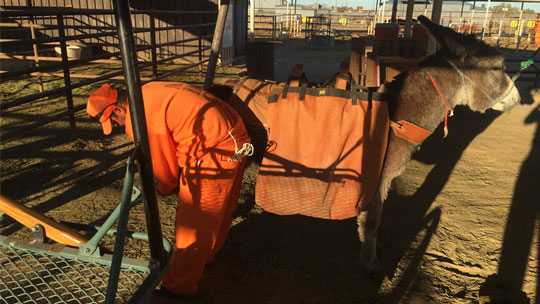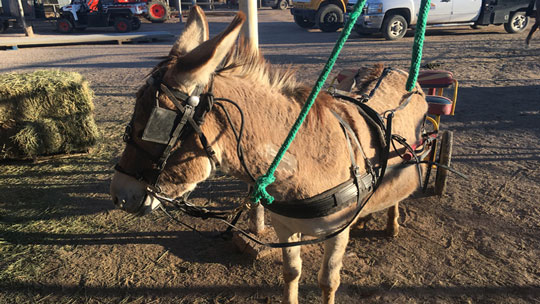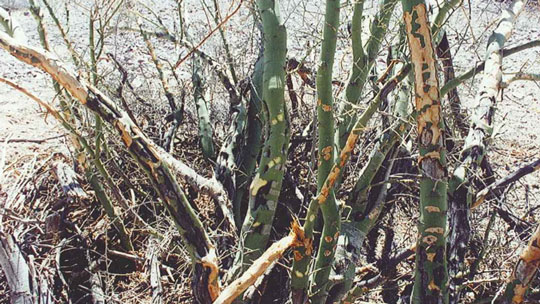
An inmate at the Florence Prison cares for a burro.
(Photo by Ben Margiott/Cronkite News)

Officials say adopting burros is the best method to reduce the wild population. (Photo by Ben Margiott/Cronkite News)

The Florence Prison is the largest burro holding facility in Arizona with over 60 burros. (Photo by Ben Margiott/Cronkite News)

Here is one of the ways that burros damage the natural habitat.
(Courtesy Arizona Game and Fish)
YUMA — The thousands of wild burros that roam the vast Arizona landscape, more than any other state, are beloved by out of state visitors and locals alike.
But the state’s booming population of non-native donkeys is degrading the natural habitat and making life more difficult for native species, according to wildlife officials.
Latest estimates have the burro population over 4,000, but the appropriate management level, the suggested amount of burros needed to maintain a “thriving, natural ecological balance,” is just 1,316.
The large discrepancy between the recommended and actual amount of burros in Arizona is causing wildlife officials to ramp up efforts to rein in the burros and prevent them from overrunning the state.
Pat Barber, Arizona Game and Fish’s appointed lead for the burro overpopulation issue, has worked for the agency for 20 years and said the numbers are unprecedented.
“This is the first time that I’m aware that every herd management area in the state was over AML (appropriate management level) and in many cases, grossly over AML,” Barber said.
The Wild Free-Roaming Horses and Burros Act of 1971 made accommodations for the non-native horses and burros, establishing herd management areas wherein the burros could thrive without displacing native species — assuming didn’t exceed the recommended amount.
Today, all six herd management areas have surpassed AML, some by as much as seven times.